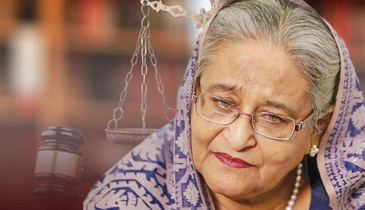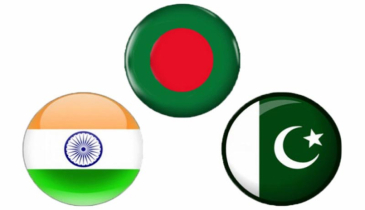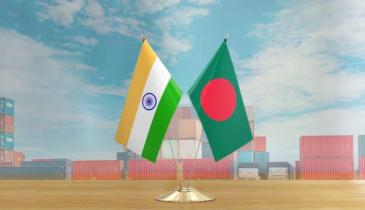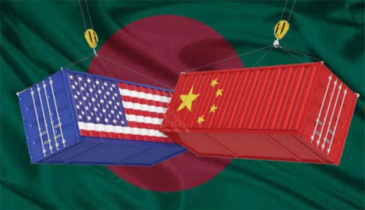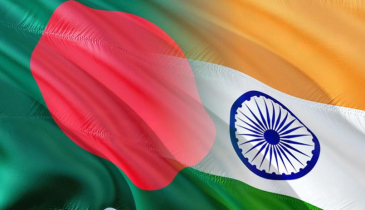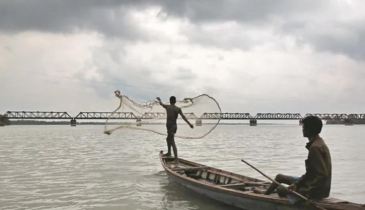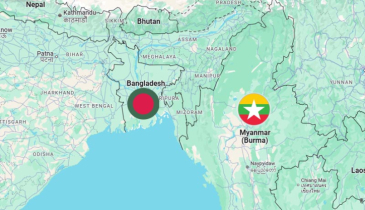Reassessing The History Of Indo–Bangladeshi Relations: A Rational Perspective

From the viewpoint of British geopolitician and parliamentarian Sir Halford Mackinder, the current territories of Bangladesh and India belong to the marginal Monsoon Coastland, while United States (US) geopolitician and political scientist Nicholas Spykman viewed the territories as part of the vital Rimland. These two Coastland/Rimland states, located in the South Asian sub-continent, along the Indian Ocean littoral, and in the broader Asia-Pacific/Indo-Pacific region, share the fifth longest land border (4,096-km) in the world. The two states are different in terms of their systems of government, ethnic and religious composition, military-economic potential, and geopolitical aspirations. On the other hand, the two states share comprehensive historical, political, economic, cultural, and linguistic ties, and there is complex interconnectedness between their security.
As the rational actor model of foreign policy suggests, states usually formulate their foreign policies through rational cost-benefit calculations. In doing so, states generally pursue approaches in dealing with other states which are best described through two components of game theory – zero-sum game and positive-sum game. In international relations, zero-sum game refers to a situation in which a state gains benefits from its interactions with another state, but the other state does not receive any benefit, or even loses something. In contrast, positive-sum game indicates a situation in which both states gain benefits from their mutual interactions. In addition, the concepts of relative gain and absolute gain are relevant here. When a state compares its gains from a deal with another state and concludes that it is gaining relatively less than its counterpart, the state is thinking of relative gain. On the other hand, when a state does not compare its gains from a deal with another state and instead concludes that cooperation will accord benefits to both states, the state is thinking of absolute gain.
Positive-sum Game: Bangladesh’s War of Liberation
Bangladesh, in its current form, emerged as a state in 1971, and its creation was inextricably linked to Indian geopolitics. Bangladesh obtained its independence from Pakistan through a brutal war of liberation. During the war, India hosted the Bangladeshi government-in-exile, accorded substantial political and diplomatic support for the Bangladeshi cause, sheltered approximately 10 million refugees from the erstwhile East Pakistan, and trained, equipped, and advised the Bangladesh Forces. Finally, Indian intervention in the war in November–December 1971 helped accelerate the defeat of the Pakistani forces and liberate Bangladesh. Thus, in 1971, Bangladesh received substantial benefits, in the form of political, diplomatic, military, and humanitarian support, while dealing with India.
On its part, India received extensive geopolitical gains from the liberation of Bangladesh. These benefits include: the bifurcation and considerable weakening of its arch-rival Pakistan, the elimination of potential Pakistani threat to eastern India, the creation of a friendly and militarily weak state on its eastern border, the formation of a secure market for Indian goods, the repatriation of more than 9.9 million refugees into Bangladesh, the destruction of the safe haven for Naga and Mizo insurgents in the Chattogram Hill Tracts (CHT), the reduction of Chinese influence in the region, and the establishment of Indian hegemony in South Asia. In addition, the avoidance of a prolonged conflict in Bangladesh, realized through the Indian military intervention, prevented the possible strengthening of Communists in Bangladesh, while the emergence of a friendly government in Bangladesh allowed India to localize the Maoist-Naxalite insurgency in West Bengal.
Thus, in the interactions between Bangladesh and India during the war of liberation, both parties received benefits, and accordingly, it was a positive-sum game.
Zero-sum Game: 1972–1975
Between 16 December 1971 and 15 August 1975, Bangladesh was governed by the Awami League (AL), and the AL-led government under Sheikh Mujibur Rahman demonstrated a pro-Indian ‘tilt’ in their foreign policy. Yet, Indo–Bangladeshi relations during this period can be characterized as a largely zero-sum game on India’s part.
To be fair, Bangladesh did receive some benefits from its cordial partnership with India during this period. Within three months of Bangladesh’s independence, Indian troops were withdrawn from the state by mid-March 1972. India was the largest provider of foreign aid to Bangladesh until June 1972, and the Indian Navy initially undertook efforts to demine Bangladesh’s Chattogram and Mongla seaports (eventually, the operation was taken over by the Soviet Navy).
However, India received far greater benefits from the partnership. The requirement to confront Pakistan on two fronts was removed forever, and the Pakistani military presence along India’s eastern border, bolstered during the Bangladesh War, was permanently uprooted. Moreover, the Indians confiscated almost all military equipment surrendered by the Pakistanis, and accusations of plunder by Indian troops in Bangladesh created negative perceptions about India among Bangladeshi citizens. The Treaty of Friendship, Cooperation, and Peace between Bangladesh and India, signed on 19 March 1972, strengthened India’s security, as Bangladesh pledged not to participate in any anti-Indian military alliance.
By 25 March 1972, more than 9.9 million Bangladeshi refugees were repatriated to Bangladesh from India, relieving India of a serious socio-economic burden, and eliminating the possibilities of large-scale socio-political unrest in the Indian provinces of West Bengal, Assam, and Tripura on account of a protracted refugee crisis. The bases of Naga and Mizo insurgents in the CHT were demolished, eventually paving the way for the reestablishment of effective Indian control over Nagaland and Mizoram. In fact, even after the withdrawal of the bulk of the Indian troops from Bangladesh, a small contingent of Indian troops apparently remained in the CHT to contain the Naga and Mizo insurgent threats. Also, the emergence of a friendly and AL-governed Bangladesh deprived the Maoist-Naxalite insurgents in West Bengal of a potential safe haven on Bangladeshi territory and contained the possible rise of Communism in Bangladesh.
Moreover, the Indo–Bangladeshi Trade Agreement, signed on 1 November 1972, provided Indian goods extensive access to the large Bangladeshi market, and the increase in cross-border smuggling hurt the already struggling Bangladeshi economy. The Indo–Bangladeshi Protocol on Inland Water Transit and Trade, signed on the same day, provided greater advantage to India owing to the large imbalance in bilateral trade. Meanwhile, India continued to divert the waters of transboundary rivers through the construction of dams, such as the Farakka Barrage, contributing to severe economic problems in Bangladesh. Moreover, the Indo–Bangladeshi Land Boundary Agreement, signed on 14 May 1974, was ratified by the Bangladeshi parliament, but the Indian parliament refused to ratify it for more than four decades owing to domestic political interests. Thus, Indo–Bangladeshi border dispute, along with their maritime boundary dispute, lingered for a long time, while at least 69 Bangladeshi citizens were killed by the Indian Border Security Force (BSF) between 1972 and 1975.
Thus, between December 1971 and August 1975, in spite of Bangladesh being governed by a pro-Indian administration, New Delhi resorted to a zero-sum game in dealing with Dhaka. This contributed to the rise of anti-Indian sentiment among sections of the Bangladeshi elites and masses, and this constituted one of the factors which triggered the August 1975 coup d’état, resulting in the downfall of the Mujib administration.
Zero-sum Game: 1975–1996 and 2001–2008
Between 16 August 1975 and 22 June 1996, Bangladesh was governed by a number of different administrations, but none of them can be characterized as ‘pro-Indian.’ Similarly, between 16 July 2001 and 5 January 2009, Bangladesh was again governed by several governments, but none of them can be characterized as ‘pro-Indian’ either. So, during these two periods, India predictable pursued policies towards Bangladesh with a zero-sum mindset.
During this period, Indo–Bangladeshi land and maritime boundary disputes continued to persist, with several border clashes occurring between the two states (particularly in 1979 and 2005). At least 1,115 Bangladeshi citizens were killed by the BSF during these periods. India occupied the disputed South Talpatti Island in 1981, while the dispute over the river-island (char) on the Muhuri River remained unresolved. Also, India continued to divert water from the transboundary rivers, contributing to Bangladesh’s continued economic and environmental problems. Moreover, India sheltered, trained, and equipped the Shanti Bahini, the military wing of the insurgent Prabtya Chattagram Jana Sanghati Samiti (PCJSS), to undermine Bangladeshi control over the CHT. Meanwhile, the secessionist Bangabhumi Movement and its military wing Banga Sena were based in India. All the while, Indian political and media establishment continued to portray Bangladesh in a negative light, accusing Dhaka of persecuting the Hindus and other minorities, and using the irregular migration of Bangladeshis to India as a domestic political tool.
Zero-sum Game: 1996–2001 and 2009–2024
Between 23 June 1996 and 15 July 2001 and between 6 January 2009 and 5 August 2024, Bangladesh was governed by the AL, traditionally viewed as positively disposed towards India. Still, Indian policy towards Bangladesh during these periods were characterized by its usual zero-sum vision.
Admittedly, during this period, Bangladesh and India signed a 30-year Ganges water-sharing treaty on 12 December 1996. Also, Indo–Bangladeshi maritime boundary dispute was largely resolved through an arbitration by the Permanent Court of Arbitration on 9 July 2014, and India finally ratified the Land Boundary Agreement on 6 June 2015, facilitating the exchange of enclaves between the two states.
However, the dispute over the river-island on the Muhuri River remains unresolved, and a dispute still exists between Dhaka and New Delhi over the delimitation of the continental shelf in the Bay of Bengal. Moreover, during the tenures of the AL, at least 740 Bangladeshi citizens were killed by the BSF. In addition, India continues to divert the water of other transboundary rivers, such as the Teesta, harming Bangladesh’s economy and environment, and it has so far refused to conclude any agreement on the matter.
Meanwhile, during the AL-led governments, India obtained comprehensive geopolitical advantages from Bangladesh. During this period, Bangladesh extradited the leaders of numerous Northeast Indian insurgent groups, including the United Liberation Front of Assam (ULFA), to India, and dismantled their bases inside Bangladesh. This helped India contain the insurgencies in its Northeast Indian provinces and embed its control over the territories. Moreover, Bangladesh provided India with transit and transshipment facilities, granting the landlocked Northeast Indian provinces access to the Bay of Bengal via Chattogram and Mongla seaports. However, India has so far refused to provide Bangladesh with a transit to Nepal and Bhutan, despite signing a motor vehicle agreement in 2015. Also, India obtained Bangladesh’s approval for the withdrawal of the water from the Feni River. In addition, Bangladesh greatly increased its military and security cooperation with India in bilateral and multilateral formats, particularly in terms of hosting joint drills, training Bangladeshi personnel in India, purchasing Indian military equipment, and possibly allowing the installation of Indian coastal surveillance radars in Bangladesh.
During these periods, India obtained the contracts for numerous projects in Bangladesh, including the construction of bridges, power plants, and pipelines. Moreover, Bangladesh accommodated Indian geopolitical concerns by liquidating the Chinese-backed Sonadia deep seaport project and allowing Indian participation in the Rooppur nuclear power plant. Meanwhile, Indian political figures have repeatedly made anti-Bangladeshi comments, dehumanized Bangladeshi immigrants for scoring domestic political gains, adopted the Citizenship (Amendment) Act which was partially aimed at Bangladesh, and used economic warfare to exert pressure on Bangladesh. India has refrained from playing a substantial role in resolving the Rohingya refugee crisis, and instead undertook the National Register of Citizens (NRC) in Assam to root out alleged Bengali intruders. Last but not the least, India objected to the Bangladeshi acquisition of Chinese Ming-class submarines, but it itself refused to sell submarines to Bangladesh, instead selling a submarine to Myanmar.
Concluding Remarks
A reassessment of the history of Indo–Bangladeshi relations demonstrate that New Delhi has largely pursued a zero-sum game in dealing with Bangladesh irrespective of the government in Dhaka, striving to attain its geopolitical objectives while according Bangladesh little geopolitical or economic leverages. While Bangladesh did make some absolute gain during these periods, from a relative gain perspective, India gained far more from Bangladesh. This has hampered the development of good-neighbourly relations between the two Coastland/Rimland states, fostered mutual antipathy between their peoples, and allowed external powers to extend their influence in the region. However, this trend is harmful for both Dhaka and New Delhi in the long run. Hence, India should reassess its policy vis-à-vis Bangladesh, and develop mutually beneficial and good-neighbourly relations with the latter on the basis of mutual respect for each other’s territorial integrity and sovereignty, mutual non-aggression, mutual non-interference in each other’s internal affairs, equality and mutual benefit, and peaceful co-existence. -Source: eurasia review
.png)


